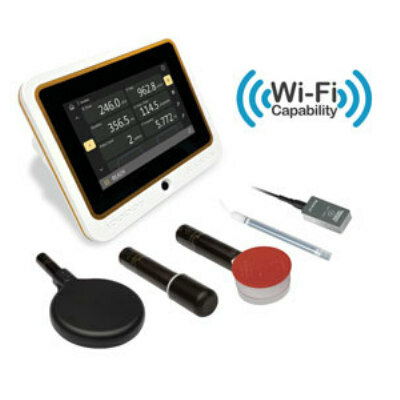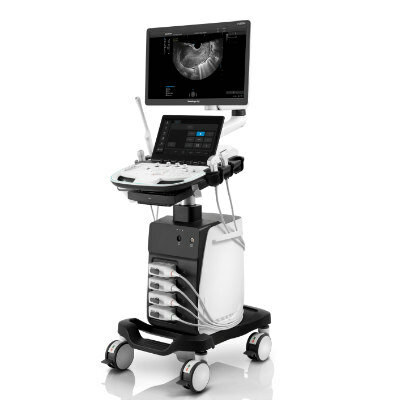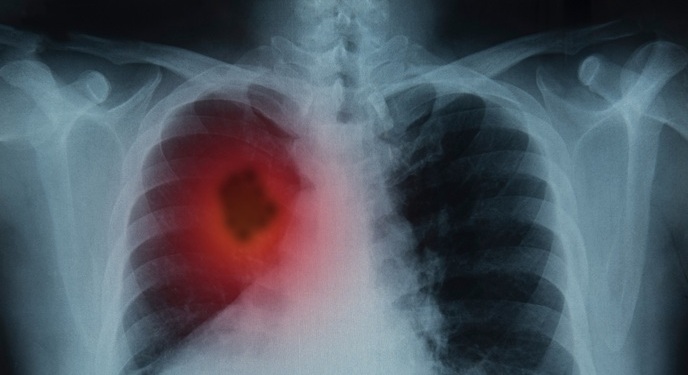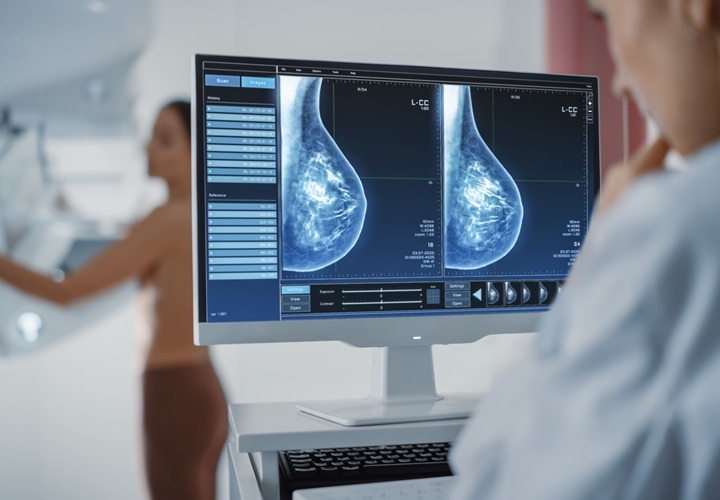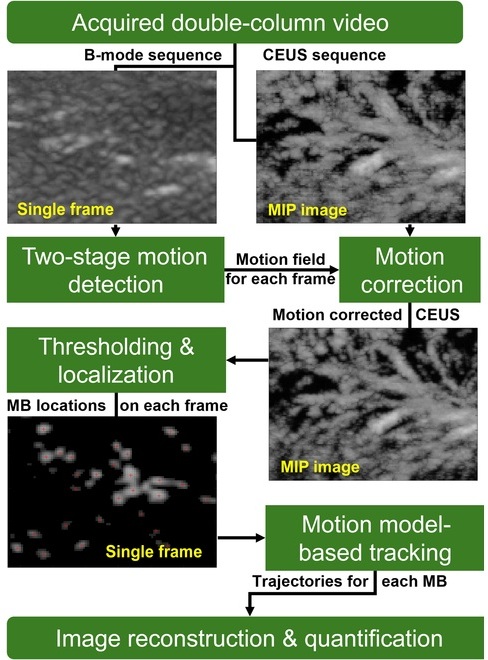New Radiography Unit Displays Images at Tube Head
|
By MedImaging International staff writers Posted on 05 Mar 2019 |
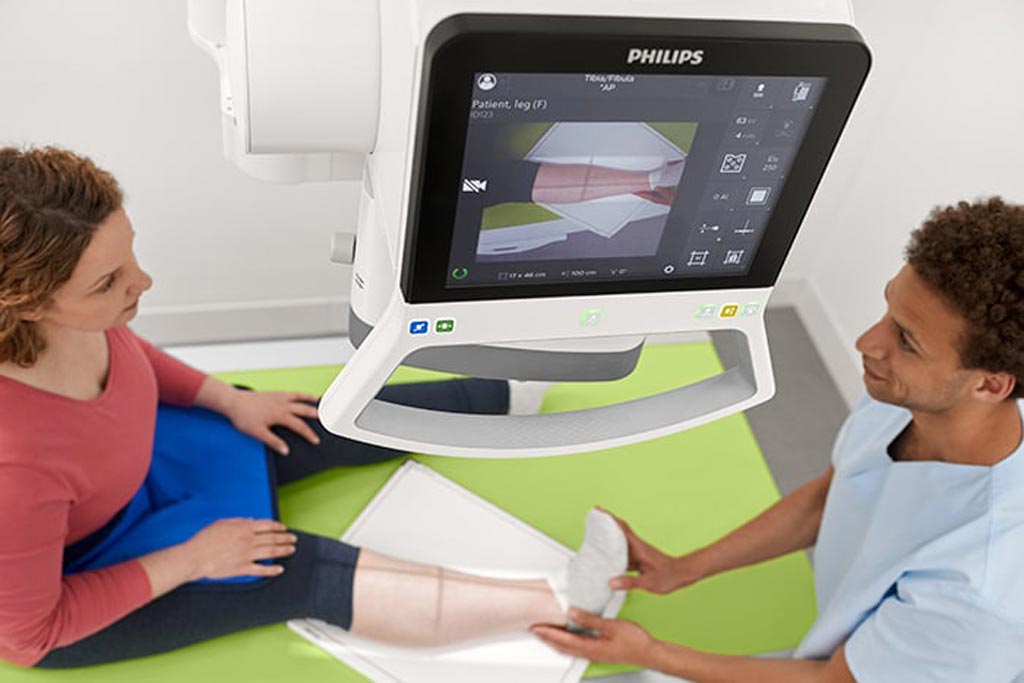
Image: A fibula exam being prepared on the DigitalDiagnost C90 DR System (Photo courtesy of Philips Healthcare).
A premium ceiling-mounted digital radiography (DR) system supports accelerated patient throughput with innovative tools that drive workflow efficiency.
The Royal Philips (Philips; Amsterdam, The Netherlands) DigitalDiagnost C90 DR System is the first to incorporate a live camera image displayed at the tube head, providing a clear view of the anatomical area being scanned during the patient positioning process, ensuring that the right area is captured with a low X-ray dose exposure. Together with proprietary UNIQUE 2 image processing and bone suppression software, radiologists can thus process clearer images for a more confident diagnosis, with a lower chance of a costly and timely rescan.
DigitalDiagnost C90 also incorporates the Philips Eleva user interface, a common platform that is used across a range of Philips DR systems, encouraging a smooth and efficient patient-focused workflow. The common user interface is also extended to the Eleva Tube Head, speeding up workflow by over 17% per examination by transferring operations into the examination room, thus allowing for more time with the patient. DigitalDiagnost also helps contribute to a lower cost of care, with flexible room configuration options and SkyPlate sharing, available among all Philips premium digital radiography systems.
“In today’s world of value-based care, healthcare organizations are investing in imaging solutions that help them achieve the quadruple aim: improved outcomes, enhanced patient experience, increased staff satisfaction, and lowered cost of care delivery,” said Daan van Manen, business leader for diagnostic X-ray at Philips. “With solutions like the DigitalDiagnost C90, Philips is helping radiology departments get one step closer to achieving that ambition through innovation that enables higher quality images, while keeping the patient and staff experience at the forefront.”
The Royal Philips (Philips; Amsterdam, The Netherlands) DigitalDiagnost C90 DR System is the first to incorporate a live camera image displayed at the tube head, providing a clear view of the anatomical area being scanned during the patient positioning process, ensuring that the right area is captured with a low X-ray dose exposure. Together with proprietary UNIQUE 2 image processing and bone suppression software, radiologists can thus process clearer images for a more confident diagnosis, with a lower chance of a costly and timely rescan.
DigitalDiagnost C90 also incorporates the Philips Eleva user interface, a common platform that is used across a range of Philips DR systems, encouraging a smooth and efficient patient-focused workflow. The common user interface is also extended to the Eleva Tube Head, speeding up workflow by over 17% per examination by transferring operations into the examination room, thus allowing for more time with the patient. DigitalDiagnost also helps contribute to a lower cost of care, with flexible room configuration options and SkyPlate sharing, available among all Philips premium digital radiography systems.
“In today’s world of value-based care, healthcare organizations are investing in imaging solutions that help them achieve the quadruple aim: improved outcomes, enhanced patient experience, increased staff satisfaction, and lowered cost of care delivery,” said Daan van Manen, business leader for diagnostic X-ray at Philips. “With solutions like the DigitalDiagnost C90, Philips is helping radiology departments get one step closer to achieving that ambition through innovation that enables higher quality images, while keeping the patient and staff experience at the forefront.”
Latest General/Advanced Imaging News
- AI-Powered Imaging System Improves Lung Cancer Diagnosis
- AI Model Significantly Enhances Low-Dose CT Capabilities
- Ultra-Low Dose CT Aids Pneumonia Diagnosis in Immunocompromised Patients
- AI Reduces CT Lung Cancer Screening Workload by Almost 80%
- Cutting-Edge Technology Combines Light and Sound for Real-Time Stroke Monitoring
- AI System Detects Subtle Changes in Series of Medical Images Over Time
- New CT Scan Technique to Improve Prognosis and Treatments for Head and Neck Cancers
- World’s First Mobile Whole-Body CT Scanner to Provide Diagnostics at POC
- Comprehensive CT Scans Could Identify Atherosclerosis Among Lung Cancer Patients
- AI Improves Detection of Colorectal Cancer on Routine Abdominopelvic CT Scans
- Super-Resolution Technology Enhances Clinical Bone Imaging to Predict Osteoporotic Fracture Risk
- AI-Powered Abdomen Map Enables Early Cancer Detection
- Deep Learning Model Detects Lung Tumors on CT
- AI Predicts Cardiovascular Risk from CT Scans
- Deep Learning Based Algorithms Improve Tumor Detection in PET/CT Scans
- New Technology Provides Coronary Artery Calcification Scoring on Ungated Chest CT Scans
Channels
Radiography
view channel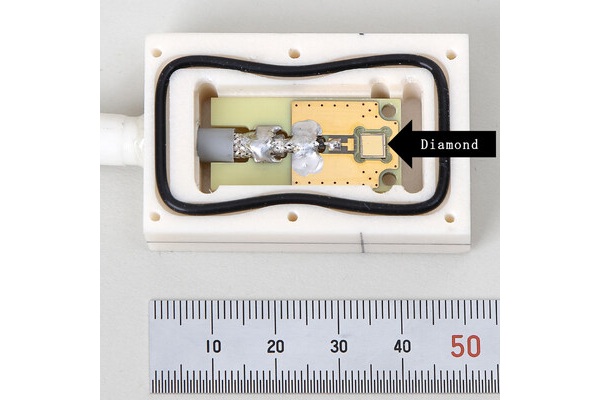
World's Largest Class Single Crystal Diamond Radiation Detector Opens New Possibilities for Diagnostic Imaging
Diamonds possess ideal physical properties for radiation detection, such as exceptional thermal and chemical stability along with a quick response time. Made of carbon with an atomic number of six, diamonds... Read more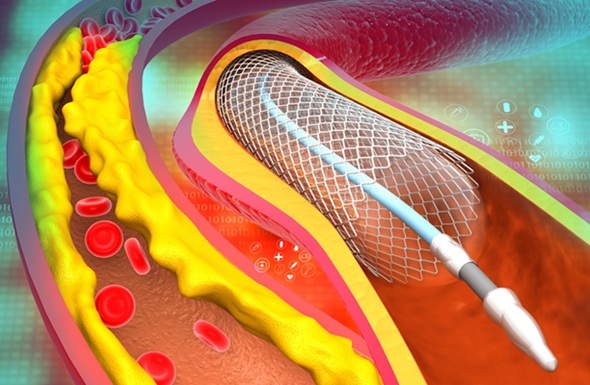
AI-Powered Imaging Technique Shows Promise in Evaluating Patients for PCI
Percutaneous coronary intervention (PCI), also known as coronary angioplasty, is a minimally invasive procedure where small metal tubes called stents are inserted into partially blocked coronary arteries... Read moreMRI
view channel
AI Tool Tracks Effectiveness of Multiple Sclerosis Treatments Using Brain MRI Scans
Multiple sclerosis (MS) is a condition in which the immune system attacks the brain and spinal cord, leading to impairments in movement, sensation, and cognition. Magnetic Resonance Imaging (MRI) markers... Read more
Ultra-Powerful MRI Scans Enable Life-Changing Surgery in Treatment-Resistant Epileptic Patients
Approximately 360,000 individuals in the UK suffer from focal epilepsy, a condition in which seizures spread from one part of the brain. Around a third of these patients experience persistent seizures... Read more
AI-Powered MRI Technology Improves Parkinson’s Diagnoses
Current research shows that the accuracy of diagnosing Parkinson’s disease typically ranges from 55% to 78% within the first five years of assessment. This is partly due to the similarities shared by Parkinson’s... Read more
Biparametric MRI Combined with AI Enhances Detection of Clinically Significant Prostate Cancer
Artificial intelligence (AI) technologies are transforming the way medical images are analyzed, offering unprecedented capabilities in quantitatively extracting features that go beyond traditional visual... Read moreUltrasound
view channel.jpeg)
AI-Powered Lung Ultrasound Outperforms Human Experts in Tuberculosis Diagnosis
Despite global declines in tuberculosis (TB) rates in previous years, the incidence of TB rose by 4.6% from 2020 to 2023. Early screening and rapid diagnosis are essential elements of the World Health... Read more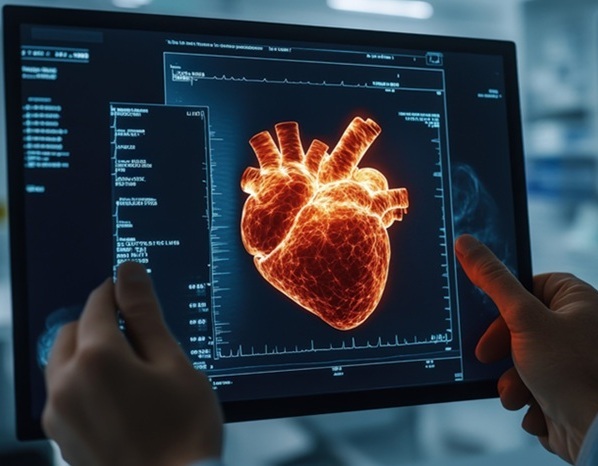
AI Identifies Heart Valve Disease from Common Imaging Test
Tricuspid regurgitation is a condition where the heart's tricuspid valve does not close completely during contraction, leading to backward blood flow, which can result in heart failure. A new artificial... Read moreNuclear Medicine
view channel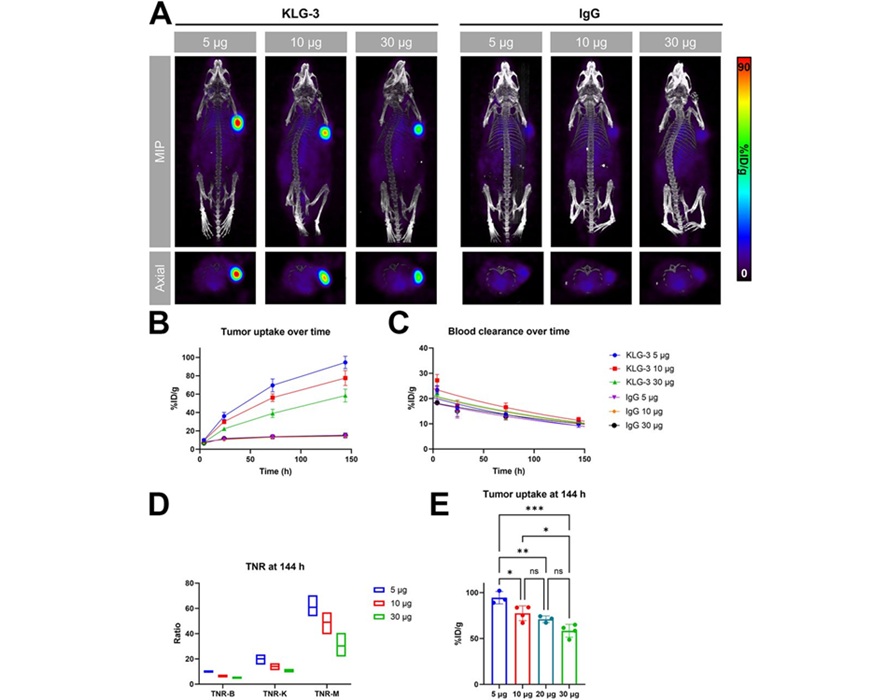
Novel Radiolabeled Antibody Improves Diagnosis and Treatment of Solid Tumors
Interleukin-13 receptor α-2 (IL13Rα2) is a cell surface receptor commonly found in solid tumors such as glioblastoma, melanoma, and breast cancer. It is minimally expressed in normal tissues, making it... Read more
Novel PET Imaging Approach Offers Never-Before-Seen View of Neuroinflammation
COX-2, an enzyme that plays a key role in brain inflammation, can be significantly upregulated by inflammatory stimuli and neuroexcitation. Researchers suggest that COX-2 density in the brain could serve... Read moreImaging IT
view channel
New Google Cloud Medical Imaging Suite Makes Imaging Healthcare Data More Accessible
Medical imaging is a critical tool used to diagnose patients, and there are billions of medical images scanned globally each year. Imaging data accounts for about 90% of all healthcare data1 and, until... Read more
Global AI in Medical Diagnostics Market to Be Driven by Demand for Image Recognition in Radiology
The global artificial intelligence (AI) in medical diagnostics market is expanding with early disease detection being one of its key applications and image recognition becoming a compelling consumer proposition... Read moreIndustry News
view channel
GE HealthCare and NVIDIA Collaboration to Reimagine Diagnostic Imaging
GE HealthCare (Chicago, IL, USA) has entered into a collaboration with NVIDIA (Santa Clara, CA, USA), expanding the existing relationship between the two companies to focus on pioneering innovation in... Read more
Patient-Specific 3D-Printed Phantoms Transform CT Imaging
New research has highlighted how anatomically precise, patient-specific 3D-printed phantoms are proving to be scalable, cost-effective, and efficient tools in the development of new CT scan algorithms... Read more
Siemens and Sectra Collaborate on Enhancing Radiology Workflows
Siemens Healthineers (Forchheim, Germany) and Sectra (Linköping, Sweden) have entered into a collaboration aimed at enhancing radiologists' diagnostic capabilities and, in turn, improving patient care... Read more




